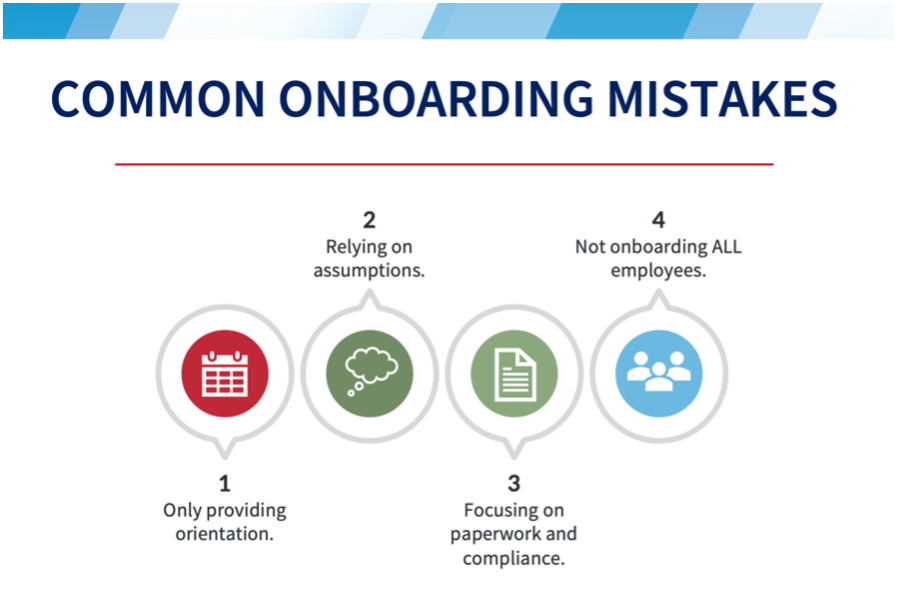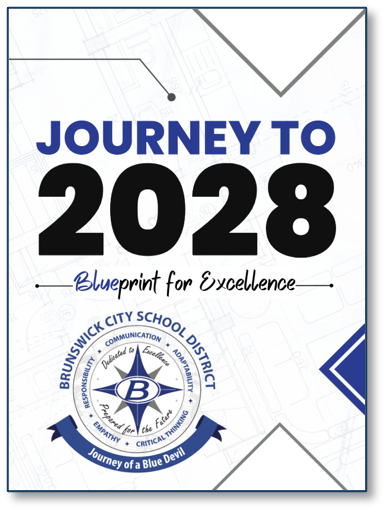Onboarding for Keeps: Building Programs that Retain Talent
By Kate Heynoski and Kim Ratcliff
Onboarding is often confused with orientation, but they are not the same! Onboarding is the process of helping new employees become acclimated to their role and the organization over time. It begins before and extends well beyond the one-time event of orientation.
The process of onboarding is an important element of a new employee’s experience with the organization because it connects them with your culture. For an ongoing, comprehensive onboarding experience, avoid the following common mistakes:
Only providing orientation. Some organizations only provide the one-day, first-day event and do not provide a comprehensive, ongoing onboarding experience that fully engages and prepares employees for success. Effective orientation includes pre-boarding, or the initial phase of welcoming a new employee, which occurs between the acceptance of a job and the first day of work. Pre-boarding is followed by the official orientation event before the employee’s first day and then the ongoing onboarding process to help new employees get acclimated. This process should last for months and could extend into multiple years, depending on the organization and the role.
Relying on assumptions. Only 12% of U.S. employees say their organization does a good job of onboarding, and 81% of new hires feel overwhelmed with information throughout the onboarding process. Take the time to ask new employees what they want and need rather than assume you already know.
Not onboarding ALL employees. New hires who participated in well-structured onboarding programs were 58% more likely to remain with the company for up to three years than those who did not. Look at every role and understand the needs of each staff member to ensure the right support is provided. Pay special attention to positions with high rates of turnover. These positions may benefit from a stronger onboarding process.
Focusing on paperwork and compliance. Review these resources for more details about how to manage a quality process. Completing forms and paperwork is part of every onboarding process; however, effective onboarding goes well beyond and focuses on the four C’s:
Compliance: Review policies, procedures, and paperwork
Clarification: Discuss job requirements and performance expectations
Culture: Discuss vision, mission, values, norms, and customs
Connection: Build relationships and establish a sense of belonging
Read on for specific onboarding strategies shared by Ohio districts.
Avoid the mistakes and activate steps to build success!
Building Connections with New Staff
Heidi Armentrout, Director of Personnel, Brunswick City Schools
Including eight schools, 800+ employees, and 6,400+ students, every day brings new opportunities and challenges for staff who have just begun working with Brunswick City Schools. After experiencing an increase in turnover in the past few years, the Brunswick City School District decided to transition its human capital responsibilities from the assistant superintendent and created a director of personnel position.
For the past five years, Heidi Armentrout has served in this position and has worked closely with existing staff, new staff, and those transitioning out of the district to learn more about what employees need and want from central office. A trend that she noticed in their exit surveys was a “lack of connection” and “not knowing where to go for support.”
“Creating a human connection with new staff is now a priority for me,” shares Heidi. “I make it a priority to send a personal email at the 30-, 60-, and 90-day mark and ask them what successes they have had and what challenges they are experiencing. I want to get to know them, and I am noticing that people who are engaging with me are sticking with us.” The district also administers a new employee survey at the three-week mark to assess early perceptions.
Personal connection has also been a thread to connect new employees to the district’s culture. Additionally, engaging staff beyond the central office has been a priority, including having principals participate in new teacher orientation.
“Our principals are part of the orientation process, and during the school year there are monthly principal meetings, and that’s where we remind them about making intentional connection points with new staff,” shares Heidi. “We also encourage principals and supervisors to provide positive feedback and feedback for growth throughout the year so there are ongoing touch points.”
📺 To learn more about Brunswick’s story, watch this video.
Using Itinerant Secretaries to Onboard New Secretaries
Misty Wheeler, Human Capital Specialist & Rhonda Ferguson, Itinerant Secretary, Akron Public Schools
With more than 20,000 students, 4,200 employees, and 49 schools, Akron Public Schools has many trains in motion. To help keep them on track, Akron created an itinerant secretary position (or secretary trainers) to:
Train new secretaries and substitutes
Train staff in software systems and processes
Serve as substitutes in school buildings until substitutes are available
Exercise judgment and prioritize work based on in-the-moment needs
“We have created this position as a career pathway for secretaries,” explains Human Capital Specialist Misty Wheeler. “Many of our secretarial positions have the summer off, but if someone wants a year-round job and wants to grow in their profession, this position allows for that opportunity.”
“The job of a secretary changes from day to day and moment by moment,” shares Itinerant Secretary Rhonda Ferguson. “With the real-time, hands-on training that we’re providing, it allows our new secretaries to be in the schools and learning on the job. My job is to help make sure new secretaries and the ones who have been here awhile have the support they need.”
Itinerant secretaries have also helped the district explore whether they need to adjust where clerical assistance is needed. During the staffing analysis process, the district asks for input from itinerant secretaries about what support is needed. Organizationally, the position reports to the information technology group since it holds such a key role in training and software process alignment.
📺 To hear more about Akron’s story, watch this video.
Learn More
This blog post was inspired by a recent networking meeting focusing on onboarding strategies. To go deeper, we encourage you to watch the video from the meeting and refer to these onboarding resources from the Ohio Human Capital Resource Center.
We encourage human capital leaders in education to take an active role in onboarding practices. Contact us at HCRC@education.ohio.gov with any questions, or to share your ideas for stories from your organization.




